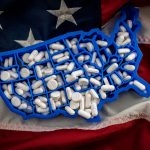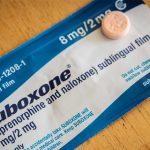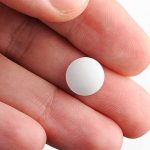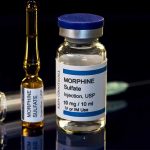Opioids are a class of drugs that provide pain relief by attaching to opioid receptors in your body. They include prescription drugs like oxycodone (OxyContin), hydrocodone (Vicodin), and codeine as well as the illegal drug heroin.
All opioids pose a risk of addiction. If you or someone you love struggles with opioid addiction, it’s important to seek professional treatment.
What Is Opioid Addiction?
Opioid addiction (also called opioid use disorder) is a serious disease that makes you feel unable to stop using opioid drugs.
Some people develop the disease after using opioids for a long time. That’s why most doctors only prescribe the drugs for short-term use.
Other people become addicted to opioids because they abuse them.
Opioid Abuse
Opioid abuse occurs when you use an opioid in a manner not prescribed by a health care provider. For example, you might:
- use it more often than prescribed
- use higher doses than prescribed
- use it without a prescription
- mix it with other drugs, such as alcohol, benzodiazepines, or prescription stimulants
All of these behaviors can make you feel relaxed and happy (or “high”). They also pose serious health risks, including overdose.
Opioid Overdose
An opioid overdose occurs when an opioid slows down your breathing to a life-threatening degree.
According to the Centers for Disease Control and Prevention (CDC), most drug overdose deaths involve synthetic opioids such as fentanyl. However, non-synthetic opioids can also cause fatal overdose.
Common symptoms of overdose include trouble breathing, slowed heartbeat, vomiting, and pale, clammy skin.
If you or someone you love displays these symptoms, call 911 or visit your local emergency department. In most cases, emergency responders will administer a medication called naloxone (Narcan). This medication rapidly reverses the effects of an opioid overdose.
Learn more about Opioid Overdose
Signs Of Opioid Addiction
The most common signs of opioid addiction are tolerance and physical dependence.
Tolerance means that over time, your body gets used to the effects of opioids. You’ll need increasingly larger or more frequent doses to feel the desired effects.
Physical dependence means your body starts relying on opioids to function normally. If you stop using them, you may experience withdrawal symptoms. According to the National Institutes of Health (NIH) the most common opioid withdrawal symptoms include vomiting, diarrhea, restlessness, insomnia, and cold flashes.
Other common signs of opioid addiction include:
- mood swings
- isolation from friends and family members
- trouble completing tasks at work or school
- decline in personal hygiene
- loss of interest in activities once enjoyed
- changes in eating or sleeping habits
- doctor shopping (visiting multiple doctors to get multiple opioid prescriptions)
In addition, a person with opioid addiction may frequently experience opioid side effects. The most common side effects of both heroin and prescription opioids include drowsiness, constipation, confusion, and nausea.
Learn more about Side Effects Of Opioid Addiction
Opioid Addiction Treatment Options
If you or a loved one shows signs of opioid addiction, seek help at a drug abuse treatment program.
There are two main types of treatment programs: outpatient and inpatient.
In an outpatient program, you regularly visit a treatment center while living at home. In an inpatient program, you’ll live at a treatment center and receive 24/7 care. Your doctor can help you decide which type of program is best for you.
Also, if you have a co-occurring mental health condition (such as depression or schizophrenia), choose a treatment program that offers dual diagnosis treatment (treatment for addiction alongside other mental health concerns).
When you enter a treatment program, you’ll receive a personalized treatment plan. According to the National Institute on Drug Abuse, an effective treatment plan will include services such as:
Medical Detox
As mentioned above, most people with opioid addiction experience withdrawal symptoms upon quitting the drugs. You’re more likely to experience these symptoms if you quit an opioid too suddenly.
During medical detox, doctors will help you slowly stop using opioids so you can avoid or minimize withdrawal symptoms.
Therapy
In therapy, a mental health professional will help you identify your triggers (people, places, or other things that make you want to abuse opioids). You’ll then learn coping skills to help you manage those triggers.
Common coping skills include meditation, exercise, journaling, and spending time with sober friends.
Your therapist can also help treat any underlying mental health concerns that contributed to your opioid misuse.
Medication-Assisted Treatment (MAT)
In MAT, doctors prescribe medications to make your recovery easier. According to the Substance Abuse and Mental Health Services Administration (SAMHSA), medications used in MAT for opioid addiction include:
- buprenorphine, which reduces opioid cravings
- methadone, which reduces opioid cravings and withdrawal symptoms
- naltrexone, which blocks the pleasant effects of opioids
Aftercare Planning
Before you leave the treatment program, your doctors will work with you to create an aftercare plan. This plan will include strategies meant to reduce your risk of relapse, such as:
- ongoing therapy
- support groups
- regular exercise
- assistance with education, housing, or employment
To learn more about treatment options, please contact Northeast Addictions Treatment Center. We offer a variety of evidence-based treatments for people with opioid addiction and other substance use disorders.
Frequently Asked Questions
What’s The Strongest Opioid?
The strongest opioid known in the United States is carfentanil, a tranquilizer used on large animals. Carfentanil is chemically similar to fentanyl but significantly more powerful.
It is about 50 times more potent than heroin, 100 times more potent than fentanyl, and 10,000 times more potent than morphine.
To learn more, read Opioids Listed From Strongest To Weakest
What Are Some Synthetic Opioids That Are Abused?
Some of the most commonly abused synthetic opioids include:
- fentanyl, which is 50 times stronger than heroin and responsible for numerous overdose deaths
- carfentanil, which is 100 times stronger than fentanyl and intended as a tranquilizer for large animals
- tramadol, which is a synthetic analog of codeine
- meperidine, which is often prescribed under the brand name Demerol
Learn more about commonly abused Synthetic Opioids
How Do Opioids Work?
Opioid painkillers work by binding to opioid receptors throughout the nervous system, providing pain relief at therapeutic doses and an intense euphoric high when abused.
Learn more about How Opioids Work
How Long Do Opioids Stay In Your System?
Opioids stay in your system for several days after last use. For example, a urine drug test can detect opioid use for between three and 14 days later. How long opioids can be detected depends on various factors, including metabolism and the type of opioid used.
Learn more about How Long Opioids Stay In Your System
What’s The Difference Between Opiates & Opioids?
The difference between opioids and opiates is that opiates must always be natural and derived from the poppy plant while opioids can be natural, semi-synthetic, or completely man-made. Opiates are always opioids but opioids are not always opiates.
Learn more about Opioids Vs. Opiates
Sources
- Centers for Disease Control and Prevention — Drug Overdose Deaths
- National Institute on Drug Abuse — Commonly Used Drugs Charts
- National Institute on Drug Abuse — Effective Treatments for Opioid Addiction
- Substance Abuse and Mental Health Services Administration — MAT Medications, Counseling, and Related Conditions
- United States National Library of Medicine — Opiate and opioid withdrawal
Written by
Northeast Addition Editorial Team
©2024 Northeast Addition Center | All Rights Reserved
This page does not provide medical advice.





